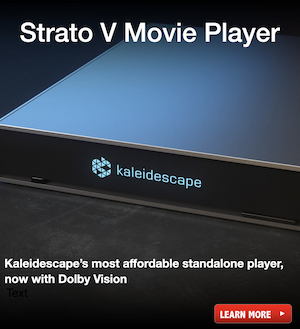NAD’s Refreshed C 316BEE V2 Integrated Amp and VISO HP70 Headphone Announced
(NAD)(May , 2018) NAD arrived at High End Munich 2018 with two big announcements. Up first is a refresh to one of its most popular integrated amplifier models. The unveiling of the budget C 316BEE V2 ($399) marks the end of a two-year update to the company’s five Classic Integrated Amplifier models, presenting buyers with a range of options. The line’s top-end is now comprised of the C 388 ($1599) and C 368 ($899), while the C 328 ($549) and C 338 ($649) deliver moderately price options.
According to NAD’s Greg Stidsen, Director of Technology and Product Planning: “Anyone who is familiar with NAD’s proud history knows that an affordable, high performance integrated amplifier is what launched the brand 45 years ago. With the C 316BEE V2, NAD has completely updated its five Classic amplifier models with new industrial design and MM phono inputs to satisfy vinyl lovers.” He continued by saying, “What has not changed however is the company’s design objective: to produce the best sounding amplifier in its class while retaining the simplicity that NAD is famous for.”
All five of NAD’s Classic Integrated Amplifiers have received external and internal updates, outwardly headlined by curved edges to the units’ slick charcoal front panels and simplistic control designs. Internally, each model now features a Moving Magnet phono stage utilizing the company’s RIAA equalization circuit that blends low noise with high overload margins for finely tuned operation. NAD has also included an infrasonic filter to help eliminate low frequency feedback resulting from intrusive turntable vibrations.
Each of the company’s two top integrated amp models (C 388, C 368) are future-proofed with upgradability made possible via Modular Design Construction with card slots to accommodate future technologies. As an added benefit, owners can use the card slots to immediately upgrade their amps to include BluOS for wireless Hi-Res audio functionality. And the mid-range C 338 is the company’s first integrated amp to feature Chromecast built-in, delivering access to Wi-Fi enabled network streaming of internet radio and UPnP.
The C 316 is currently shipping world-wide now, with distribution in North America beginning in July.
The company’s other big announcement is a new wireless noise cancelling headphone. The VISO HP70 ($399) was initially revealed at CES 2018 and is shipping now to North American retailers (worldwide distribution is scheduled to begin late May/early June). The headphone is multi-functional in its operation, offering users a fully active noise cancelling mode, along with active and passive non-noise cancelling modes, and features plush lightweight construction (11.3 ounces) for hours of fatigue free performance.
Sound quality is boosted by NAD’s RoomFeel technology, which utilizes the headphone’s onboard Bluetooth chipset and DSP capabilities to equalize output. Also, Bluetooth playback is enhanced by aptX HD performance, allowing for 24-bit streaming of your favorite tunes.
“As the audio market continues to go more and more portable, it was clear we needed a wireless, noise-cancelling version but not just a me-too product,” explains Stidsen. “The HP70 delivers remarkable sound quality, superb comfort and unique features, all at an affordable price and it is available now”.









